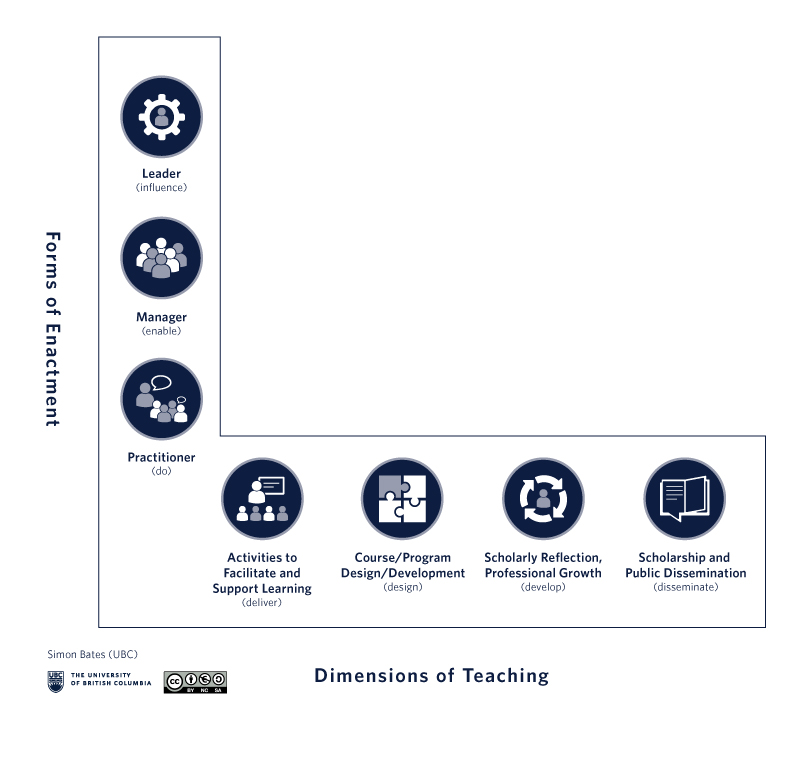The Educational Leadership Mapping (ELM) tool is a resource designed to help you plot past and future journeys so you can see/communicate where you are within the educational leadership (EL) “landscape.”
When using the ELM tool, there are no pre-determined, best patterns to be aiming for; that is, your educational leadership activities may differ significantly from someone else’s and you can both be doing work with a high impact. Learn more about articulating your EL impact.
Please note that the ELM tool is not a required part of your dossier or tenure file; it is an optional resource which is free to use as is or adapt.

The map is intended to be:
- A conversation starter about EL and how leadership differs from service.
- A planning tool to support annual reviews and pathways towards promotion/tenure.
- A framework for building professional development activities around.
- A starting point for thinking about what the impact of EL has been, and how that is evidenced.
Download the Educational Leadership Mapping tool (PDF) >
Understanding the tool
This tool is a two-dimensional framework to help individuals plot educational leadership activities. Below, you will find more information on how we understand the various terms used within the tool.
Dimensions of teaching
The dimensions of teaching comprise the four types of activities educators use to deliver, design, develop and disseminate their message to learners.
Delivery
Delivery refers to the broad range of activities that support and facilitate learning, including the time spent interacting with students in class, out of class, during office hours, seminars, etc. Activities that fall within this dimension are directly observable by students.
Design
Design refers to the development of opportunities for learning: modules, courses, program and curricula. Activities that fall within this dimension are generally not directly observable by students, but are vital to the coherence of the educational offerings they receive.
Development
Development refers to professional growth activities an individual engages in and that contribute to reflective and scholarly teaching. This is part of an on-going process by which instructors understand, reflect on, and modify their approaches or attitudes to teaching based on interactions with colleagues, collaboration with other experts, from experience and reflection to staying current with disciplinary practices.
Dissemination
Dissemination, combined with elements of scholarship, refers to making public the process and outcomes of reflective enquiry, experimentation and evaluation of teaching and learning innovations, activities and approaches.
Forms of enactment
The dimensions of teaching activity described above are expressed in different ways, both by individuals and groups, and have different points of impact. These forms of enactment are divided into three areas.
Practice
Practice refers to the act of teaching and learning: what is done as part of the work of the individual.
Management
Management refers to the enabling of teaching and learning: the creation of organizational conditions and execution of processes to support learning and teaching. There is a strong overlap with management and service contributions in the area of teaching (“doing things right”) and contributions to the work of a group, team, or combined effort.
Leadership
Leadership refers to embedding notions of enhancement, innovation and change, with impact that extends beyond the classroom. The activities undertaken to lead, influence and support others to innovate, enhance or change their practice or approach in any of these areas of teaching.
